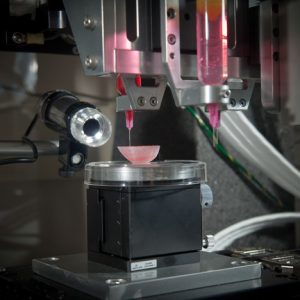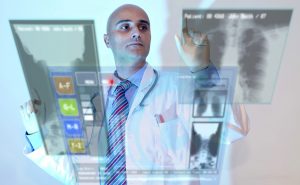Teen Use of E-Cigarettes on the Rise – Good or Bad News?
Teen use of electronic cigarettes (e-cigarettes) has more than tripled since 2011, according to a  recent report by the U.S. Surgeon General, with 40 percent of high school students saying they had used the product at least once in their lives. In that report, 16 percent of students say they had used these products within the past 30 days. E-cigarettes are a type of electronic nicotine delivery system that heats liquid containing nicotine, flavoring, and other ingredients into an aerosol. In a process known as “vaping,” users inhale the aerosol.
recent report by the U.S. Surgeon General, with 40 percent of high school students saying they had used the product at least once in their lives. In that report, 16 percent of students say they had used these products within the past 30 days. E-cigarettes are a type of electronic nicotine delivery system that heats liquid containing nicotine, flavoring, and other ingredients into an aerosol. In a process known as “vaping,” users inhale the aerosol.
Regulation of Electronic Cigarettes
In 2016, the U.S. Food and Drug Administration (FDA) finalized their rule regulating all tobacco products, including e-cigarettes. The FDA prohibits the sale of electronic cigarettes and other tobacco products to individuals under the age of 18 years.
Some individual states also impose additional regulations on tobacco products, including electronic cigarettes, specifying who can smoke e-cigarettes and where the products may be used. California requires those purchasing e-cigarettes to be 21 years or over, for example, and it does not allow consumers to use electronic cigarettes in cars with minors present.
The 2016 FDA rule included other provisions to reduce access to e-cigarettes by teens by prohibiting the distribution of free samples and the use of vending machines, but the new regulations allowed flavored  electronic cigarettes to remain on the market. Some anti-smoking groups were disappointed in this lack of regulation, in that flavors like gummy bear and bubble gum may entice younger people to start smoking tobacco. A study published in a December 2016 issue of Pediatrics supports this concern, finding that the use of flavored e-cigarettes among youth increases their risk of smoking tobacco.
electronic cigarettes to remain on the market. Some anti-smoking groups were disappointed in this lack of regulation, in that flavors like gummy bear and bubble gum may entice younger people to start smoking tobacco. A study published in a December 2016 issue of Pediatrics supports this concern, finding that the use of flavored e-cigarettes among youth increases their risk of smoking tobacco.
Proponents of electronic cigarettes can argue that tobacco smoking has actually declined among youth in the U.S., although there is not clear indication that e-cigarettes are responsible for the drop in teen smoking.
Dangers of Cigarettes, Electronic or Otherwise
Health officials are particularly worried about the use of electronics cigarettes and traditional tobacco products because of the negative effects nicotine has on the developing brain. Research shows that electronic cigarettes deliver only modest concentrations of nicotine to the inexperienced user but consumers can increase nicotine concentrations to levels similar to traditional tobacco cigarettes.
E-cigarettes also contain substances not found in tobacco products, such as heavy metals, volatile organic compounds, and ultrafine particles that consumers could inhale into their lungs. Some e-cigarette flavorings  contain diacetyl, a chemical linked to serious lung disease. Still, the dangers from using electronic cigarettes may not be as lethal as the deadly effects of tobacco smoke, making e-cigarettes the safer choice for teenagers who insist on the habit.
contain diacetyl, a chemical linked to serious lung disease. Still, the dangers from using electronic cigarettes may not be as lethal as the deadly effects of tobacco smoke, making e-cigarettes the safer choice for teenagers who insist on the habit.
“Kids are a kind of ‘third rail’ issue,” said Amy Fairchild, PhD, MPH, the associate dean of academic affairs at the Texas A&M School of Public Health in a press release. “On the one hand, they require extra protections. On the other, though, we also have to place their risks of harm into perspective. The consequences of combustible tobacco use are well known and serious, while e-cigarettes – while not risk free – represent a far lesser harm.”
Source:
https://e-cigarettes.surgeongeneral.gov/default.htm
https://pediatrics.aappublications.org/content/pediatrics/early/2016/11/03/peds.2016-2513.full.pdf
https://www.cdc.gov/tobacco/data_statistics/fact_sheets/youth_data/tobacco_use/
https://www.ncbi.nlm.nih.gov/pmc/articles/PMC3543069/
http://tobaccocontrol.bmj.com/content/23/suppl_2/ii30.full
Teens’ use of e-cigarettes rising, according to Surgeon General report
Frank Magliochetti is Managing Partner for Parcae Capital.
-
North Andover, Massachusetts
This column of posts is directed at the Healthcare Industry. Frank plans to release new sites dedicated to the industry – . He currently assists companies who are building, restructuring, transforming and resurrecting there business’s. An example of his client base are, Xenetic Biosciences , IPC Medical Corp, Just Fellowship Corp, Environmental Services Inc., Parsons Post House LLC, ClickStream Corporation as well as having a business talk radio show; The Business Architect on the URBN network.






























